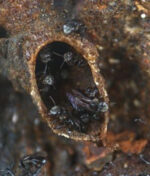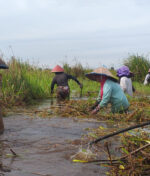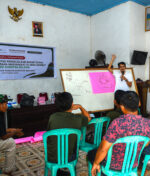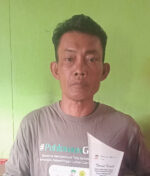
Agro-Silvo-Fishery Innovation: Optimizing Land and Improving Livelihoods in Sungai Radak Dua Village
Sungai Radak Dua Village, located in Terentang Sub-District, Kubu Raya Regency, has become a model village for the development of agro-silvo-fishery demoplots using the “Surjan” system in the peatland. The Surjan system is a cultivation system on swampy land that employs ‘mounds’ and ‘basins’ as well as the construction of canals to manage water flow.
On the ‘mounds’ or ridges, various types of plantations, forestry, and agricultural crops are planted, such as areca nut, laban, durian, as well as seasonal horticultural crops and secondary crops. Meanwhile, the ‘basins’ are used for cultivating local fish, creating an integrated and productive ecosystem.
This innovation marks a significant step forward in sustainable peatland management and offers new hope for food security and the livelihoods of the local community. This innovative farming model not only optimizes land use but also has the potential to improve the well-being of the local community.
Amid the challenges of climate change, the “Surjan” system provides an adaptive solution that integrates agriculture, forestry, and fisheries into a unified ecosystem, creating a resilient and sustainable development model for the future.

Figure 1. Agro-Silvo-Fishery Demo plot with the Surjan System, Sungai Radak Dua Village, Terentang District, Kubu Raya Regency, West Kalimantan
The development of the demo plot by ICRAF Indonesia through the Peat-IMPACTS (Improving the Management of Peatlands and the Capacities of Stakeholders in Indonesia) program, supported by BMU-IKI, seeks to overcome the challenges faced by the community of Sungai Radak Dua Village by managing water on land that is inundated during the dry season and flooding that occurs every rainy season due to clogged canals. Additionally, the community often faces pest and disease attacks that reduce agricultural production.
By integrating agriculture, forestry, and fisheries, this agro-silvo-fishery approach not only helps mitigate flooding and improve drainage but also enhances ecosystem resilience and overall agricultural productivity.


Figure 2. The Assistant for Economic Affairs and Development of the Kubu Raya Regency Secretariat, Tri Indriastuty, S.Hut, MT, planted durian trees at the demo plot in Sungai Radak Dua Village.
So far, the village government has contributed by developing the Surjan system on 15 hectares of village land out of the expected 25 hectares. Meanwhile, ICRAF has provided training to farmer groups and established a 0.5-hectare demo plot, which was built over five months since November 2023.
The Assistant for Economic Affairs and Development of the Kubu Raya Regency Secretariat, Tri Indriastuty, S.Hut, MT, who inaugurated the demo plot on behalf of the Acting Regent of Kubu Raya Regency on Tuesday, May 21, 2024, stated that the demo plot land can be planted with chilies as a strategy for inflation control and food security. She hopes the program’s results can also contribute to addressing extreme poverty and stunting in Kubu Raya Regency.
“The output is how this farming business can increase community income, both from crops and fish developed. It is hoped that this program can continue as a model even when ICRAF no longer accompanies it. The program’s results can also contribute to addressing extreme poverty and stunting,” she said.
Through the development of agro-silvo-fishery with the Surjan system, it is expected that the community can achieve food security from various seasonal horticultural crops, gain additional income from areca nut and durian, as well as secondary crops and fish, and produce charcoal fuel from laban trees.

Figure 3. One of the ‘basins’ serves as a site for fish cultivation.
“At the village level, this farming model can create eco-tourism opportunities such as fishing and agro tourism. From an environmental perspective, the application of this system will reduce the use of fire for land preparation, reduce the use of chemical pesticides due to the presence of fish on the land, and optimize the use of organic fertilizers to improve soil structure and fertility,” said Subekti Rahayu, Carbon Biodiversity Specialist at ICRAF Indonesia.
According to Rahayu, the development of the agro-silvo-fishery demo plot in Sungai Radak Dua Village is expected to become a strategic learning site for the community and relevant stakeholders in sustainable peatland management.
With the implementation of the “Surjan” system, Sungai Radak Dua Village not only demonstrates how peatland can be managed sustainably but also serves as an inspiration for other villages to adopt similar approaches in addressing climate change and improving community welfare.
Author: Dhian Rachma
Editor: Subekti Rahayu




